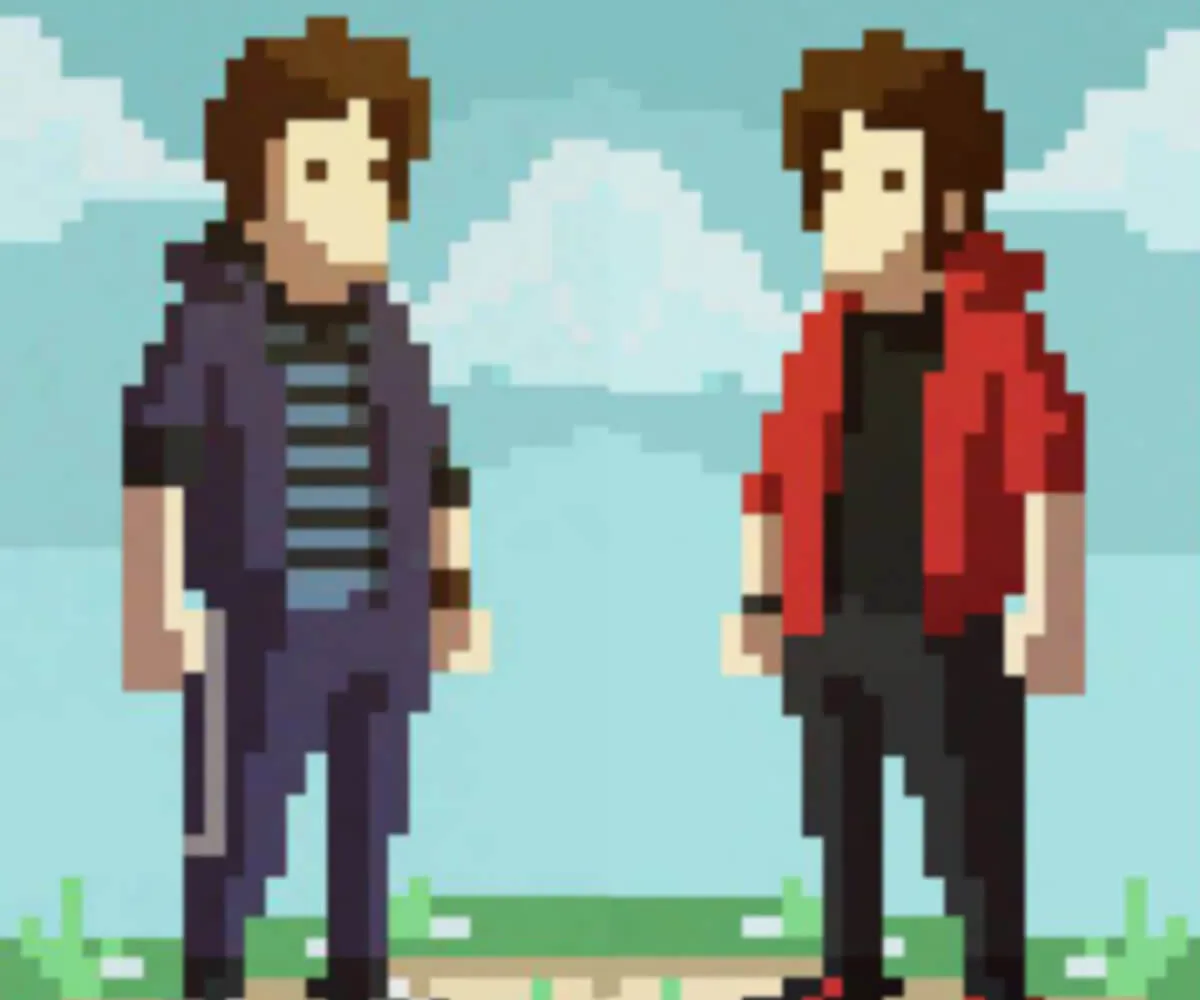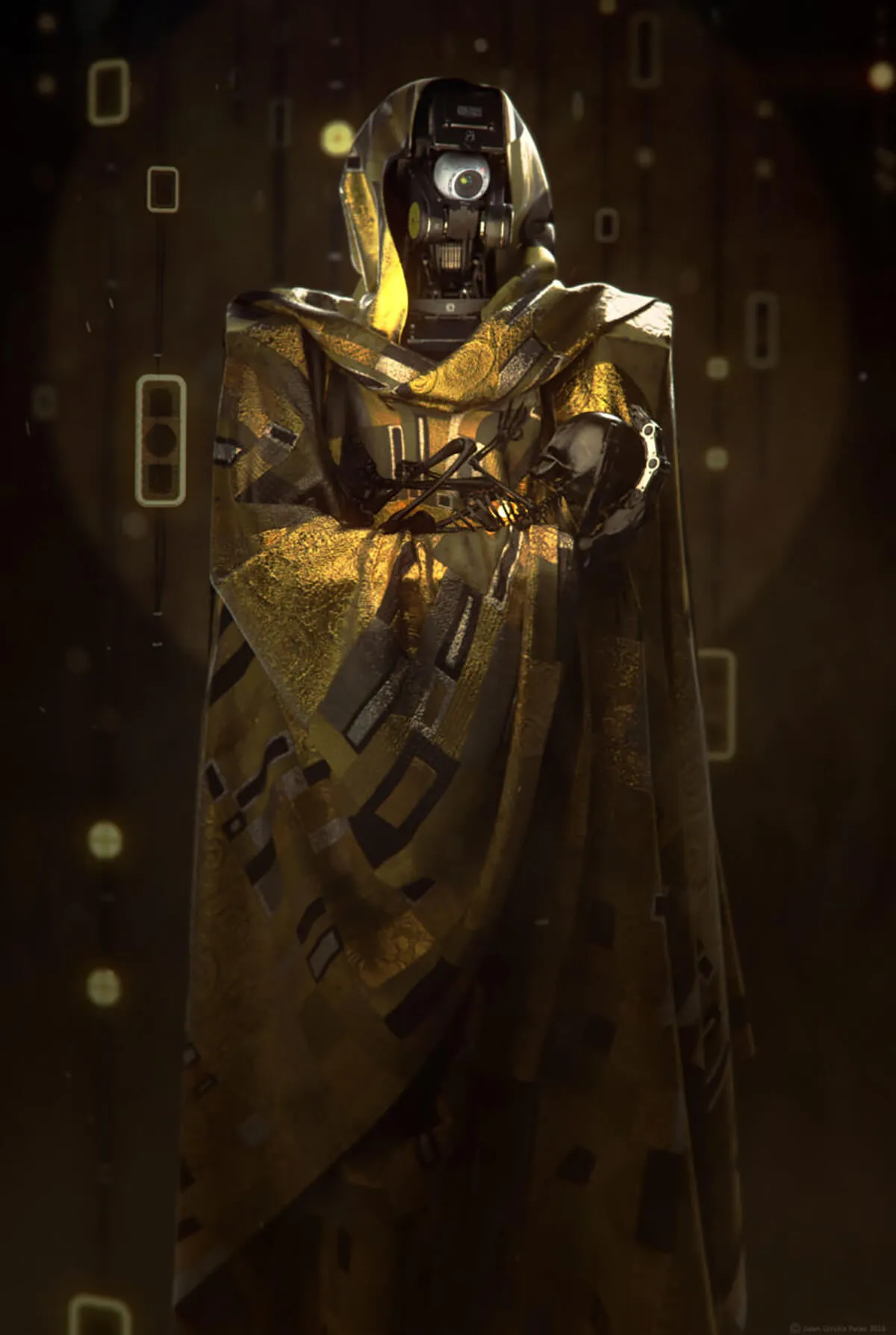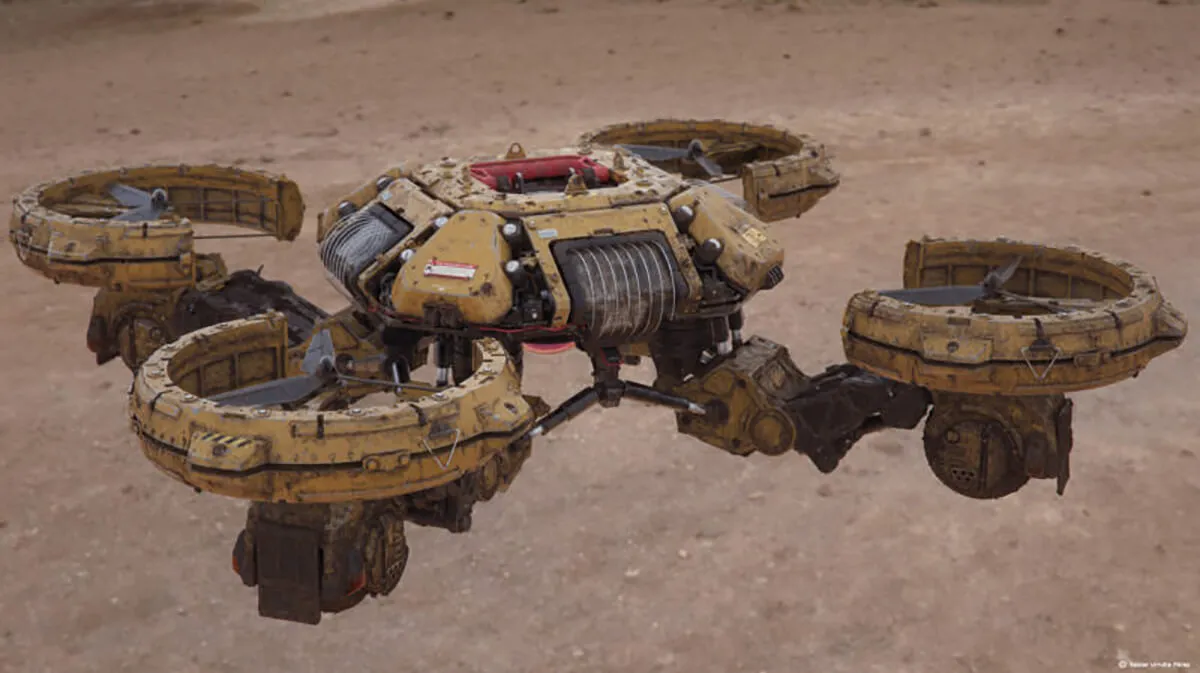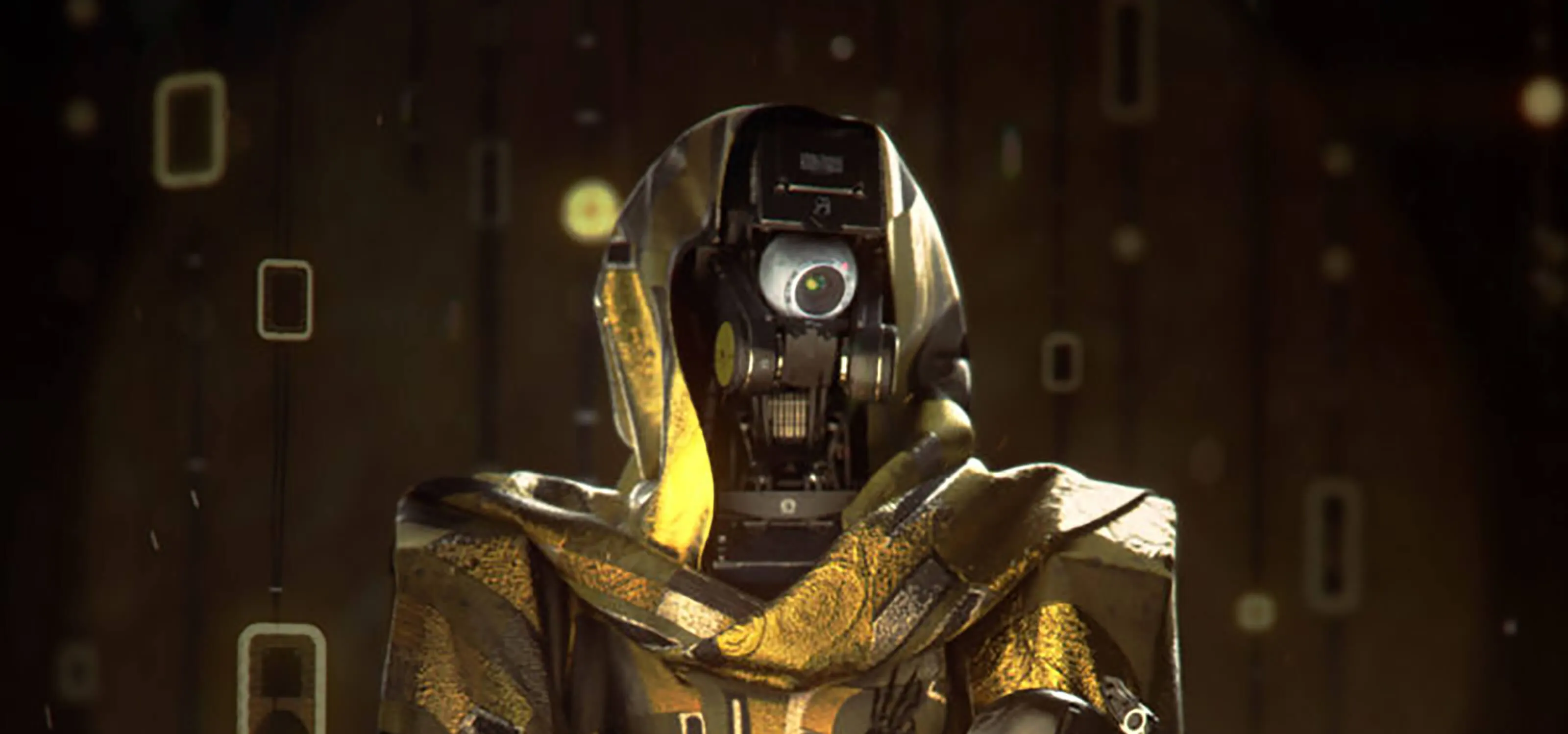Spanish brothers Xabier and Julen Urrutia Perez were born identical twins. They share a lot more in common than just their appearances though. Not only did they both go to DigiPen and graduate from the same BFA in Digital Art and Animation program, the brothers have gone on to mirror each other’s careers as well. After matching each other job-for-job since graduation, they’ve both landed today at Axis Animation, doing high-level video game cinematics for triple-A game titles.
As far back as both can remember, Xabier and Julen were drawing fantastical characters and scenes. After the young duo realized they could string their drawings together to tell stories, they started their first artistic collaboration.
“We used to draw comics for each other,” Julen says, “and when we started to see that others wanted to read them, we worked together.” Soon they started tinkering with 2D animations as well, and even took a stab at 3D animations on their own, with some very mixed results. “Xabier tried to do a simulation of a flag on a post following a tutorial from a book,” Julen says, “but he ended up simulating the post instead of the flag.”
One day, Xabier and Julen’s father read an article about the opening of DigiPen’s then new Bilbao, Spain, campus.
“When we heard that we could study for video games,” Xabier says, “that designing characters could actually be our job and not just a hobby, we couldn’t think of studying any other thing.” So they both jumped into DigiPen’s BFA program.

While the two learned a lot about how to work with the 3D animation software that had borne them waving flagposts years earlier, both say it was the fundamental fine arts courses they took during their freshman year that had the biggest impact on them. One course on “Tone, Color and Composition” they recall as being particularly helpful. “We used these concepts to do realistic portraits in classes, but I later realized that when doing stylized design, animation, or 3D, the core concepts that will make anything work are still the same. You just build on top of it,” Xabier says.
“I think for me it has a lot to do with focal points,” Julen says. “Not just the focal point of a picture, I’m talking about the focal point of everything: animation or design, character, prop, or environment. There were a lot of things I learned that I still use to be able to keep my art clear in this manner.”
Combining his fundamental fine arts and advanced software knowledge, Xabier’s impressive senior cinematic project, a short animated sci-fi film called LEVEL 1457 LAST, made its way into five American film festivals in 2014, winning the “Best of Student Award” at the Blue Plum Animation Festival.
During their senior year, one of their art instructors, Juan Raigada, left to establish his own indie game studio. A fan of his teaching, the two brothers decided to support his studio’s first game, Heart & Slash, on Kickstarter. Before they knew it, Raigada turned the tables and asked the brothers if they would like to join the development team.
“Even if my portfolio doesn’t show a lot of stylized work, I love to work in this style,” Xabier says of the robot-themed game’s unique 3D take on pixel art. The two started work on the project during their last semester of classes, designing, modeling, and animating Heart & Slash’s characters, enemies, bosses, environments, and cinematics. The roguelike brawler would eventually make its way to the PC, Switch, and Playstation 4.
After Heart & Slash shipped, the brothers were recommended by a DigiPen friend at an interesting new company named Davalor Salud. Fusing science, health, and gaming, the company created an optometric machine that could diagnose and treat a patient’s visual problems through specially designed video game experiences.
“The machine was not exactly virtual reality, it had a different way of achieving a 3D effect with a complex system of lenses that made the 3D image look natural to the eye. The depth in the image felt real, so the machine could track your eye movement and even diagnose the connection between your brain and your eye,” Xabier explains.
Soon, the brother’s found themselves working on Davalor Salud’s video game concept art, storyboards, models, and animation with a team of fellow recent DigiPen grads. “We had so much fun,” Julen says, “but in the end we felt that we needed to be somewhere else if we really wanted to get better.”

A year and a half later, the brothers left Davalor Salud to look for more challenging work, taking the summer to expand their art portfolios for potential new employers. “We love to impress each other. We always have,” Julen says. “I guess we collaborate through competition, or maybe we compete through collaboration. Either way, it’s always about challenging each other so we both can get better.” A quick glance at Julen and Xabier’s respective ArtStation websites reveals how much their “competitive collaboration” paid off — both are full of incredibly detailed sci-fi and fantasy characters rendered impressively in both 2D and 3D.
One particular project Julen worked on that summer, a series of 3D robots inspired by the work of famous painter Gustav Klimt, happened to catch the eye of Axis Animation, a Scotland-based CGI studio known for its cinematics work on franchises like Halo, Assassin’s Creed, and Horizon Zero Dawn. After seeing the recent work posted on Julen’s website, a representative from the company reached out to offer him a job. “I’ve always wanted to work on high-quality cinematics since high school,” Julen says, “but I saw it as something for the future. … I wasn’t expecting to have the chance to do it so soon.”

Two months later, Xabier sent Axis some of his own 3D renderings of photorealistic sci-fi machines.
“Lucky me, I was sitting side-to-side with the head of department at the time,” Julen says. “So I said to him, ‘Hey, you see, I have this twin brother that makes these kind of things and would love to work here.’ Two or three weeks later we were in Scotland working together!”
Reunited once again, the brothers have ended up contributing to massive titles like Destiny 2, League of Legends, and Crackdown 3.
It is amazing, a dream job really. Each project is a world on its own.”
“It is amazing, a dream job really,” Xabier says. “I model futuristic spaceships in one project. I sculpt an alien-looking hunter in another project. Then I texture stylized Asian clothing.”
Nowadays, the brothers have returned home from Axis Animation’s Scotland headquarters back to Spain, where they are continuing to freelance for the company. They also spend half their time living together as well.
When asked if the rumored “psychic link” twins supposedly possess is a real phenomenon, Julen says it is, and that it’s a real burden at times.
“We use telepathic powers all the time, and it gets very annoying because my brother always wakes me up in the middle of the night, tells me jokes about people I’m talking to in serious situations, and keeps throwing random numbers and words when I’m trying to write or focus on other things,” he says jokingly.
Mostly, however, their close bond is a force for good.
“We understand each other pretty fast and we agree on many things, and that helps a lot when trying to envision work,” Julen says.
